Editor's note: At present, a new type of test printing plate capable of displaying printing performance has emerged in the industry, thereby helping the flexographic printing factory to solve problems that often occur in the exposure process.
Every printing factory has experienced a period of confusion. For example, one day you happily arrived at your factory, saw that the products are being produced systematically, and the customers are all smiling at you. Then, your factory is in an incredible state of confusion. Your printed page There was a lot of ink spots on the plate, and the plates were also full of ink.
If this is not enough, you have also discovered that the culprit leading to the emergence of these problems is actually the exposure of the printing plate. So, you have to think about what you should do when your brain is blank and how you can get yourself back to normal production and living.
This is a question that we need to consider in The New Year's Chattanooga Times Freepress (an electronic journal in Chattanooga, Tennessee, USA). We are researching new ink formulations and we are working on the causes of printing stains. the study. This combination of the two will bring us good news for our product quality inspection personnel, so that they no longer have to face embarrassing poor quality print. Then, when everyone thinks that things will not develop in the bad direction, we are finally beginning to realize that our research results are already working.
Familiar feeling
We have had such a terrible experience before, and we know that there are two causes of this problem—inks accumulating on the plate or overprinting the plate, causing the solid area to be filled with ink. What we need to do is find an appropriate way to check the root cause of the problem. A technician from our plate company once talked with us about the entire day about the plate test page. He suggested that we check our own image (words or lines printed with negative lines to reveal white paper) in order to find the real cause of the problem. Since we use test plates every day to check whether our plate exposure and development processes are compliant, this is an easy task for us.
When looking for clues on the test plate, we realized that we had lost our goal of helping us in any way. With the help of reversed-images, we were able to detect overexposure before printing plates were printed, eliminating the possibility of confusion and downtime problems and avoiding the printer's economic losses. That is, at this time, we found that the original test plate has been difficult to meet our needs. Obviously, we need to thoroughly innovate the target page of the printing plate: remove some old test targets and add new test targets so that we can get more necessary test content.
Originally, our test objectives included a small amount of highlights and tone tables. Before printing on the printing press, we can only determine the minimum and maximum dot percentages. In addition, there are a lot of useless targets in the test page, such as a large field block in the middle of the page, which is more suitable for testing density and spots, but only when you create a target page for testable print quality. It can only play a role.
Our goal is to create a test page that knows the printing plate performance without having to print on the machine. We want to find a new tool that allows people to look at the plates that have just been exported from the developer and find out what defects they may have.
Self-made solution
At the beginning of the design of new test plates, we should study all the test objectives and find the benefits of adding them to the new test plate. Although there are many goals to choose from, we can continue to narrow down the choices and sort them by the size of the action.
The goal of making a new printing plate is to let it contain many different goals, so that users can use the continuous improvement of the performance of the printing plate to meet the printing customer's various requirements. We want to add all the test targets that will help us find problems before we print, and add them to the new test plate. Finally, we finally designed a page that can test any printing plate under any printing conditions. In our mind, it is the perfect test page.
When you test the plate, be sure to remember to measure the minimum percentage of highlight points. This is a new test target. It also has four boxes, each with an independent percentage of dots, from 2% to 5% range. These test objectives are evenly distributed across the entire page, so people can easily measure the minimum percentage of dots.
Another important factor is that the new test plate can evenly distribute the high-light dots on the surface of the printing plate, and can finish the printing in as little as three minutes. This is because they are used in the development process with ordinary newspaper flexo plates. The biggest difference. In this water wash system, the plates will pass through a row of nozzles, and those uncured high polymer materials will also be flushed. Since the water pressure of each nozzle is different, the amount of polymer material that is washed away on the plate is also different.
The tone table was added to the four edges of the new test plate and extended to the middle of the plate to measure whether the page margins on the top and bottom of the page are the same. In addition, the tone table can also be used to determine the darkest dot of the tone and the position where 50% of the dots appear on the plate.
Of course, test targets such as the minimum font and the minimum line are added to the new test plate so that people can check the printed positive and negative pages.
When checking these targets on the plate, you can thoroughly check the depth and width of the gap between the word shoulder and the reverse white font. In addition, this test version also has a resolution target that allows you to compare positive and negative lines to determine the extent of dot gain.
Look at my findings
Recently, I used the new plate test chart to find an exposure problem on the plate. In the test point of the minimum network point, we noticed that the dots at the top of the printing plate tend to remain relatively good, 4% of the dots are generally stable, and 3% of the dots are easier to lose.
However, when examining the same target in the middle part of the plate, we will find that almost 3% of the dots are sunburned, and at the bottom of the plate, people can no longer see the proportion of dots. . This clearly shows that the light on the platen is not evenly illuminated on the surface of the plate, and that the top of the plate receives more light than the bottom. As a result, the percentage of outlets of the entire printing plate cannot meet our requirements.
Now we have contacted our plate dealers and repaired our platelet as soon as possible. If there is no new plate test page, maybe we will never find this problem.
Share information
Next, we will further help the operators to understand what they can do with their own test plates. We produced a poster for the test plate and gave a brief introduction to the role of each test target. If this poster is hung in the platemaking shop, it can also be used as a guide for the operation of the new platesetter. In addition, it can remind people to check the various targets on the plate to eliminate its defects.
After completing the production of new test plates and posters, we feel that it will surely become a popular testing tool for flexographic printers and suppliers. If all flexographic printing plants use a unified testing tool, they can not only compare, but they can also share their experience in exposure, development and quality control. Of course, if a printer has good ideas or successful experiences, it can also be shared with colleagues. We can speak the same language and form a unified thought and understanding.
Information sharing not only benefits every printing company, but also drives the entire printing industry forward.
Peeler
MULTIFUNCTIONAL --- Peel, Scrape and Cut skins of vegetables and fruits. Do all these tasks easily with a just single tool.
UNIQUE EDGE TECHNOLOGY --- This feature makes the blades glide along the surface of the fruit or vegetable which allows smooth peeling activity. It can peel the hardest and softest skin with ease which only would not save you time, but also effort.
WITH DUAL STAINLESS STEEL BLADES ---TOALLWIN Peeler is a state-of-the art peeler that has ultra-sharp and swivel dual stainless steel blades for an effortless peeling. You can peel right the first time with efficiency.
COMFORTABLE GRIP --- The handle of the swivel peeler is anti-skid that allows a comfortable grip. It is ergonomically designed; thus, it fits the palm perfectly. It is easy to hold in either hand and can be used even during repetitive peeling with less tension on the hands due to a pressure-absorbing processed rubber handle.
EASY STORAGE AND ACCESS --- Peeler by TOALLWIN has a convenient hook end that lets you hang your peeler for easy access and storage. It is also available in various colors that you can choose from.

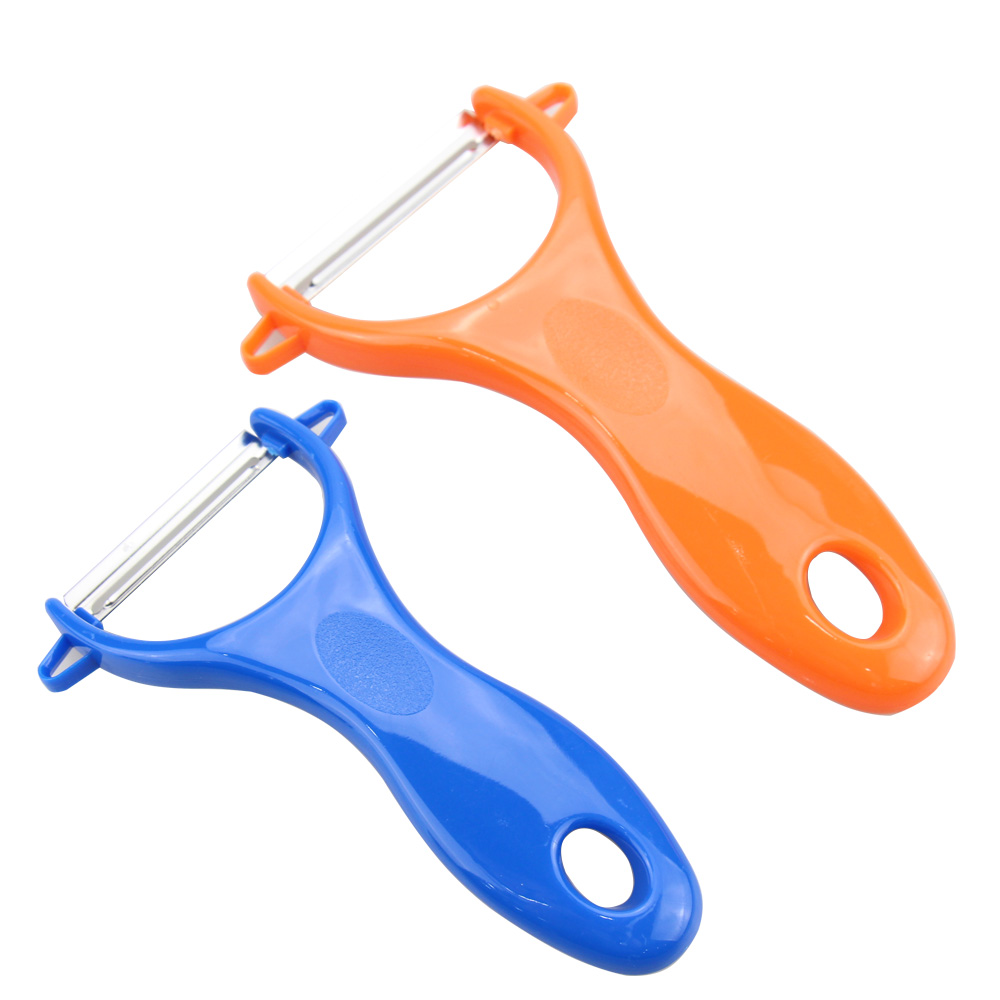
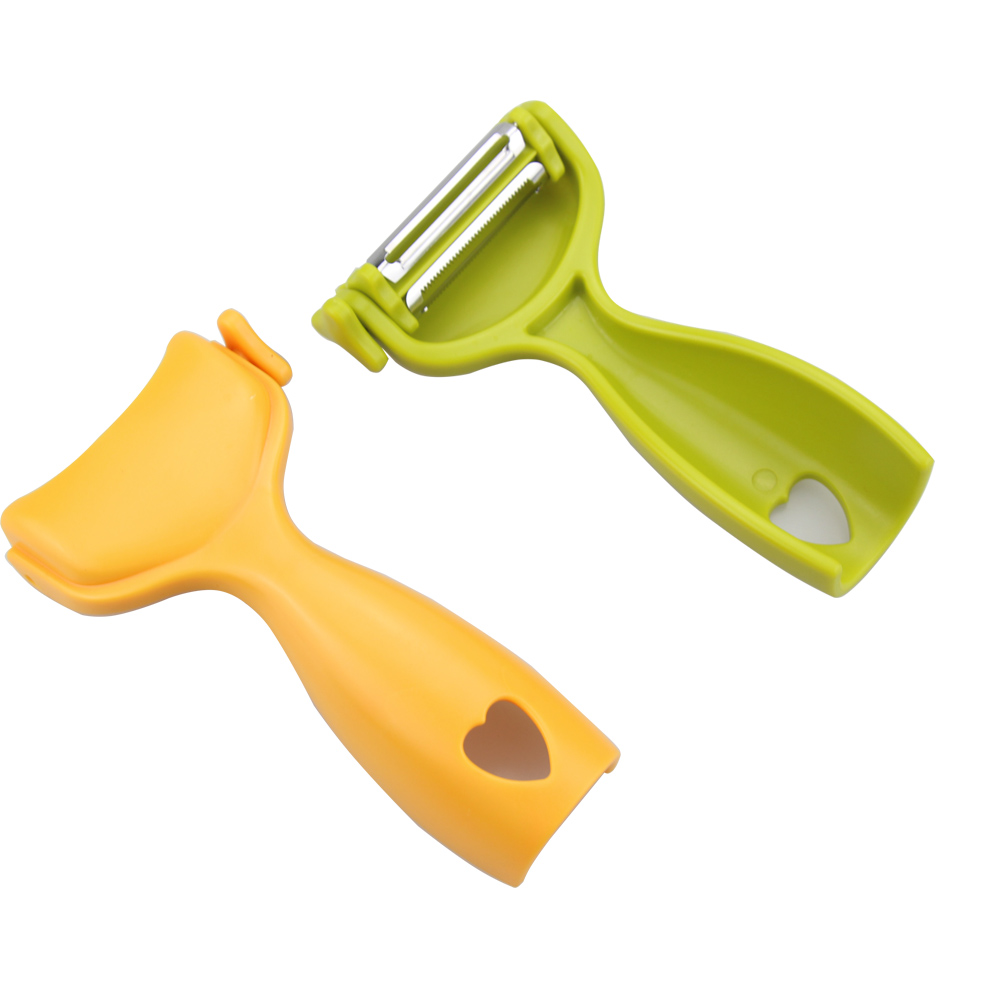

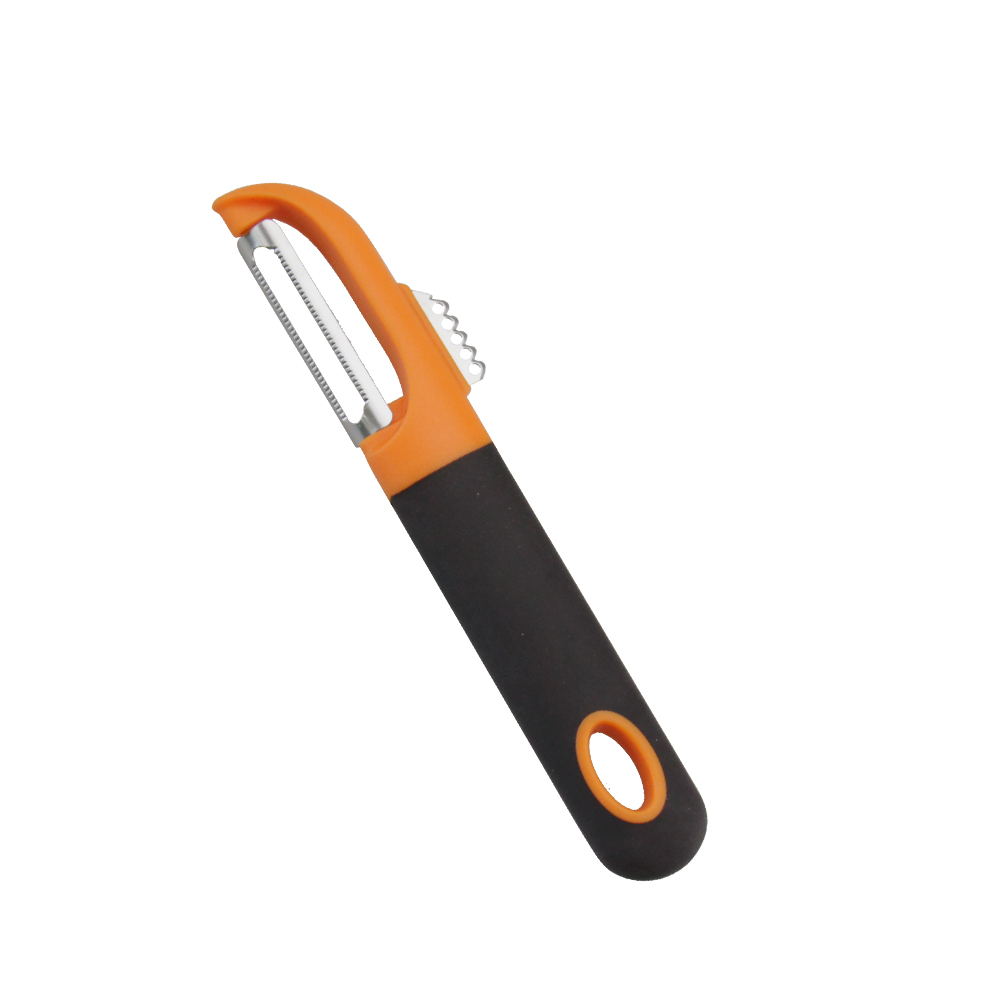
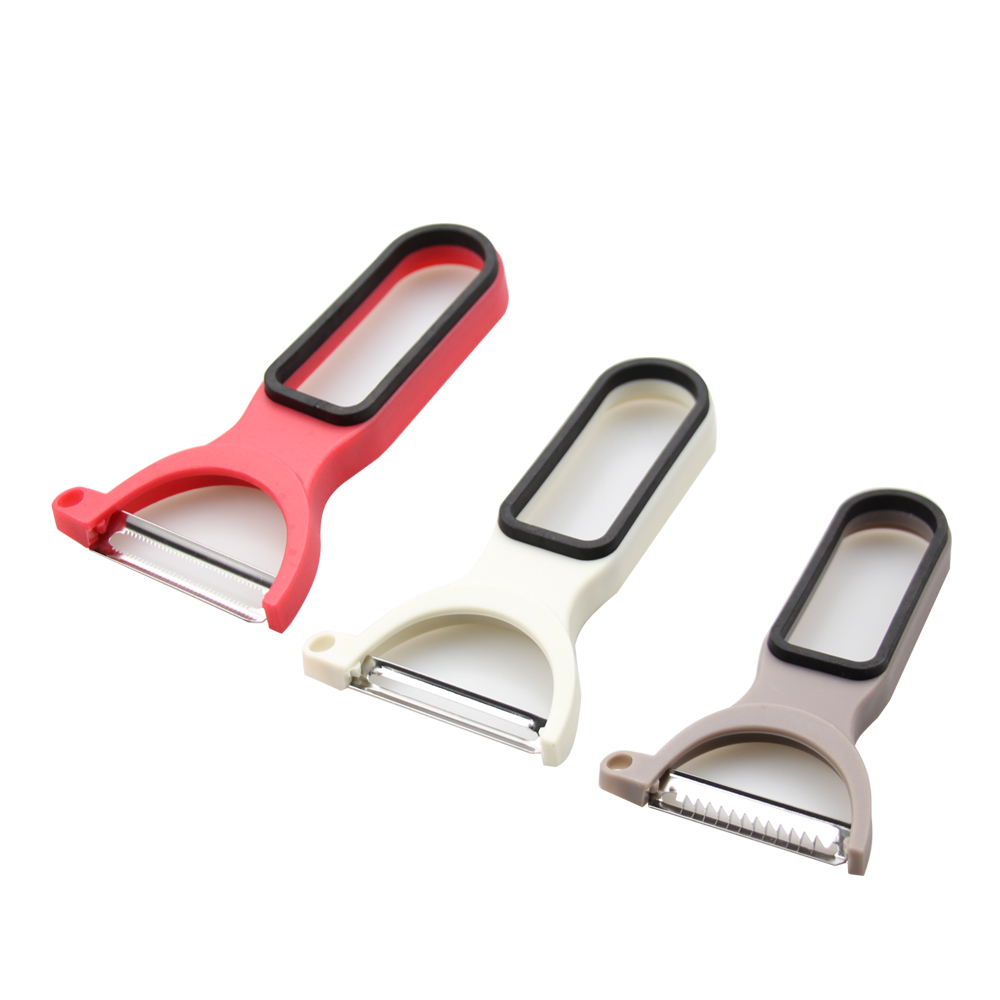
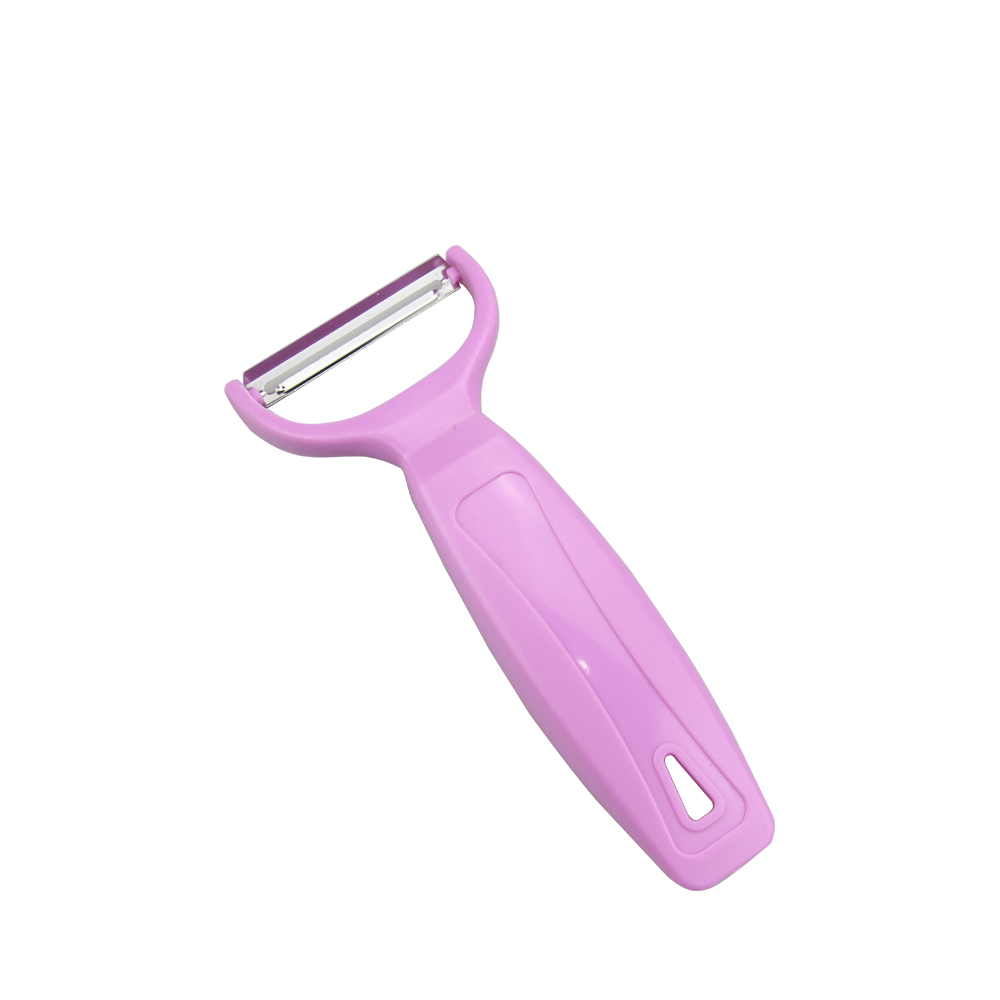
Vegetable Peeler,Fruit Peeler,Stainless Steel Vegetable Peeler,Rotating Food Peeler
YANGJIANG TOALLWIN TRADING CO., LTD , https://www.kitchenknife.de